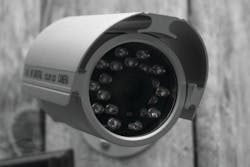World demand for video surveillance is strong but it is skewed by high demand in China and Asia, where local products dominate. Demand in developed markets is running at about half the rate.
As a result of these factors, a very significant number of manufacturers are falling below the minimum economic size to operate efficiently and cannot finance from cash flow the ever-increasing cost of developing cutting-edge products and heavy marketing costs. New investment would be the best solution for those with promising products provided they have time to negotiate a satisfactory deal. Merger is more practical, but it requires a strong synergy and little product and/or geographic overlap if the union is going to be successful.
Consolidation would improve the performance of the industry but our analysis over the last 14 years detailed in our report - “The Physical Security Business in 2013” - shows that the value of M&A deals across the physical security manufacturing industry has fallen in the last two years. So could the Vicon / IQinVision merger be a sign that more consolidation is about to begin?
Merger and acquisition activity has grown by a compound annual rate of seven percent over the last 14 years, but during this time it has peaked and declined four times culminating with its value decreasing by 48 percent during the last 2 years. Acquisitions from major companies outside the business have had a major influence on this rather erratic cyclical pattern, but in the last two years consolidation from within has had more impact. The value of merger and acquisition deals in 2011 was $9.847 billion a rise of 23 percent over the previous year which was a record high, but in 2012 it declined to $7.168 billion a fall of 27 percent and this fell yet again to $5.030 billion in 2013.
There are two main reasons for this. The first is the lack of confidence and/or interest by the major conglomerates to commit more investment to the industry. The second is that there has been a lack of buyers from outside the business, particularly defense and IT.
We would have expected these two factors alone to have caused a much greater reduction than 48 percent by value because most of these deals were north of $1 billion. But the good news is that acquisition activity in the middle market, mainly populated by specialist security companies, has significantly increased. In 2013, we identified 34 deals compared with 56 in 2012, 82 in 2011 and 80 in 2010. While the number of deals and total value of acquisitions has fallen, the average value of a deal has increased from $120m in 2011 to $147 million in 2013.
The last 12 months have been a good for acquisitions, irrespective of the fact that by volume and value it has declined because we now have medium and small-sized players taking a more active role in using strategic acquisitions as a tool for growth. Partly through this, the industry structure is becoming more effective in delivering customer value propositions.
M&A in the Video Surveillance Sector
The breakdown of acquisition spend in 2013 in 12 business categories across the full spectrum of physical security products shows that video surveillance had the highest share by number with 19.44 percent, up from 14.8 percent in 2012. Of these, Flir Systems, the top producer of thermal cameras, made three acquisitions which will play an important role in expanding their business. The first announced in December 2012 was the acquisition of Lorex Technology Inc. for $1.32 per share, representing an aggregate purchase price of $60 million.
Video surveillance products accounted for 15 percent by volume of the deals made in 2012. These included the floatation of Avigilon and the management buy-out of CSST. GJD Manufacturing Ltd. acquired Advanced LED Technology Ltd, Oncam Global Group acquired the remaining stock in Grandeye, Zicom Electronic Security Systems (India) purchased Phonics International Qator and Optex Co Ltd. Japan acquired Raytec Ltd UK.
Avigilon, founded in 2004 with sales currently running around $250 million, is approximately a third of the size of Axis Communications but its growth in 2013 was 100 percent and it has a market capitalization of around $1 billion. Just like Axis, this performance was achieved by organic growth, but in the last 18 months it has made some significant strategic acquisitions.
In 2013, they acquired two companies. In May, they acquired privately held RedCloud Security, Inc. a provider of web-based, physical and virtual access control systems. Through the acquisition, Avigilon adds a complementary product line to its end-to-end high-definition surveillance solution and provides the company with access to a growing segment of the global security market. Despite it being a different product, it fits in neatly with their existing distribution network.
In December, they announced a definitive agreement to acquire the video analytics company VideoIQ, Inc. for cash consideration of $32 million. Founded in 2006, VideoIQ has a developed portfolio of video analytics intellectual property with 23 patents granted or pending. This fits in directly with their existing business. Both of these acquisitions should deliver much more revenue than both companies achieved in 2013 and, at the same time, will provide their system integrators with a more comprehensive solution.
Avigilon has shown that the growth predictions they are aiming for will require filling in the gaps with strategic acquisitions.
Axis has so far retained its policy of growth through organic development which has proved to be a great success. Could they have grown faster through acquisition? Would they have pushed back the barriers to IP networking faster? No one will ever know.
For more information on the global market for video surveillance, visit http://www.memoori.com/portfolio/thephysicalsecuritybusinessin2013/.




